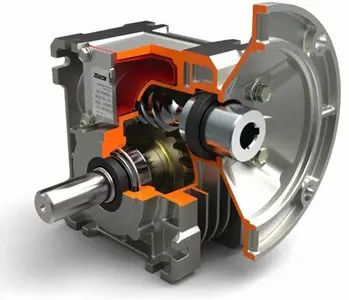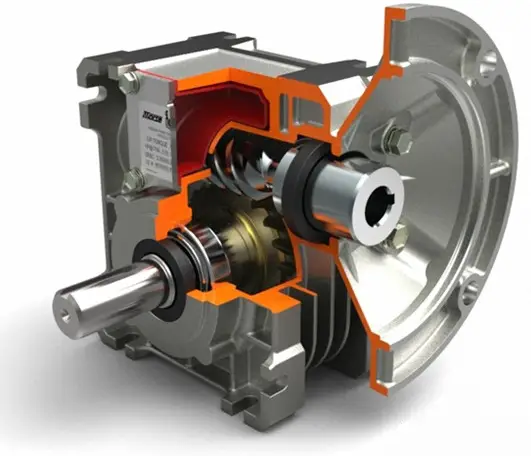LUXION KEYSHOT PRO V2.1.25 (Win X64 / Mac Os X X64) | 341 Mb / 400 Mb
KeyShot (sort of formerly known as HyperShot), is a cross platform (Windows and OS X) progressive rendering system that’s perhaps one of the easiest to use on the market.
KeyShot can already import data from a wide range of systems using a variety of formats. IGES, STEP and OBJ are the standards as well as Rhino, SketchUp and Pro/E. For this release, there’s been some heavy work done on allowing the user to import from both Autodesk’s Alias (using the .wire file on Windows and OS X), Siemens’ Solid Edge (PC only) as well as some improvements in the existing tools (Pro/E is now cross platform).
One thing worth noting is that the .wire format requires a license of Alias on the same machine for it to work, both on Windows and OS X. Although they all seem to work pretty reliably, it's a shame that the Alias importers need the same machine combo, particularly if you're a visualisation specialist and don't have, or don't need access to the full application.
Scene set-up and libraries
While the scene browser isn't new, which lets you see all the geometry entities in your scene, the ability to merge BIP files (KeyShot’s native format) is and when combined with the new widget for positioning geometry, it's a very useful set of functionality. You can can build up multiples of the same product model, present them in different colour-ways, add a little context to a model or simply add a few props.
Once everything is in position, the next step is material set-up and there's been a lot of work done in this area. Yes, the system is supplied with a good range of materials and texture options, but anyone who engages with visualisation will know that you need to be able to define your own. The workflow is now much simpler, the dialogs are slider driven (with fine tuning done with the mouse wheel) and there are new options for paint without metallic flakes. There are also new material types in the form of Gem, Liquid, Solid Glass as well as a brand new Translucent materials - this is said to be ideal for "the creation for plastic and organic material using subsurface scattering."
Alongside pure creation, the libraries have seen a good amount of work over the last few releases for not only materials, but backplates, environments and elsewhere. Materials and HDR images are more easy to organise, you can rescan the default folder once you've added new HDRIs and the materials management and grouping process is much much easier. Both are searchable and conveniently, you can now vary the thumbnail size.
Decals & emissive materials
Decals aren't a feature new to 2.1, but it's worth a look as there have been a few changes. KeyShot supports decals or labels in a variety of formats and gives the user full control over how and where they're placed. There's a variety of options for mapping to a model, but perhaps the most usable is the normal projection combined with dynamic placement. Essentially, you load the label, use the default normal mapping method and use the 'position label' option to drag the label around to get it in position. Then you use the scaling, rotation and other controls to fine tune it. New for 2.1 is the ability to add specularity to decals. This enables the label to be matched to the underlying surface so reflections look right (as if under a clear coat for example) but as yet, it doesn't support a bump map. Another one that's not new in 2.1 but worth a mention is the ability to define a material and have it emit light. For those looking to simulate the effect in their renderings of any form of specific light source, it's ideal. It's particularly useful when you're looking to render up products with LED-based light as you only need a representation of the LED source and the system will handle the rest.
GPU driven features
The 2.1 release sees the integration of GPU-based calculation features. If you're not aware of the term it refers to Graphics Processing Unit - or the chip on your graphics card. The concept being that you can use these processors for more than just calculating graphics and there are vendors using it not only for rendering, but also for things like simulation. Many of these have proprietary requirements for the GPU in use such as NVIDIA's Cuda architecture but KeyShot doesn’t. If your workstation or laptop has a GPU in place, it'll work and have the following effect calculated separately both in real time mode and when rendering out a final pass. KeyShot now gives you two GPU-processed effects. Bloom is a naturally occurring phenomenon in photography where light bleeds from source over edges and within transparent materials. It means you have control over both the radius and intensity of the effect. The second is Vignetting or the darkening of the edges around the image, ideal for focussing on the object you're visualising.
In Conclusion
Let's cut to the chase - the rendering world is one in which there's a hell of a lot of activity: the user has never been more spoiled for choice. If you have the time and can summon the effort, you can create some stunning imagery with a wide range of tools. But, my question would be this: Who's got the bloody time? If you're a visualisation expert, then your job is to do that. If you’re a designer or an engineer, then it isn't your sole focus and you need not only a powerful tool, but one which is easy to use and one which lets you get on with the other, perhaps more pressing, tasks at hand. And in this regard, KeyShot excels.
DEVELOP3D.COM, NOVEMBER 2010, Page 59
LUXION_KEYSHOT_PRO_V2.1.25_WIN64-XFORCE
http://www.filesonic.com/file/...25_MACOSX_X64-XFORCE.part1.rar
http://www.filesonic.com/file/...25_MACOSX_X64-XFORCE.part2.rar
http://www.filesonic.com/file/...25_MACOSX_X64-XFORCE.part3.rar
http://www.filesonic.com/file/...25_MACOSX_X64-XFORCE.part4.rar
http://www.unibytes.com/lSoYis...V2.1.25_WIN64-XFORCE.part1.rar
http://www.unibytes.com/2h28dc...V2.1.25_WIN64-XFORCE.part2.rar
http://www.unibytes.com/QQgQJg...V2.1.25_WIN64-XFORCE.part3.rar
http://www.unibytes.com/FUZCwK...V2.1.25_WIN64-XFORCE.part4.rar
LUXION_KEYSHOT_PRO_V2.1.25_MACOSX_X64-XFORCE
http://www.filesonic.com/file/...V2.1.25_WIN64-XFORCE.part1.rar
http://www.filesonic.com/file/...V2.1.25_WIN64-XFORCE.part2.rar
http://www.filesonic.com/file/...V2.1.25_WIN64-XFORCE.part3.rar
http://www.filesonic.com/file/...V2.1.25_WIN64-XFORCE.part4.rar
http://www.unibytes.com/KCK9NR...25_MACOSX_X64-XFORCE.part1.rar
http://www.unibytes.com/d-e67A...25_MACOSX_X64-XFORCE.part2.rar
http://www.unibytes.com/Qle5p0...25_MACOSX_X64-XFORCE.part3.rar
http://www.unibytes.com/HrAmMU...25_MACOSX_X64-XFORCE.part4.rar
No mirrors please
Welcome to my blog!
http://www.filesonic.com/file/...25_MACOSX_X64-XFORCE.part1.rar
http://www.filesonic.com/file/...25_MACOSX_X64-XFORCE.part2.rar
http://www.filesonic.com/file/...25_MACOSX_X64-XFORCE.part3.rar
http://www.filesonic.com/file/...25_MACOSX_X64-XFORCE.part4.rar
http://www.unibytes.com/lSoYis...V2.1.25_WIN64-XFORCE.part1.rar
http://www.unibytes.com/2h28dc...V2.1.25_WIN64-XFORCE.part2.rar
http://www.unibytes.com/QQgQJg...V2.1.25_WIN64-XFORCE.part3.rar
http://www.unibytes.com/FUZCwK...V2.1.25_WIN64-XFORCE.part4.rar
LUXION_KEYSHOT_PRO_V2.1.25_MACOSX_X64-XFORCE
http://www.filesonic.com/file/...V2.1.25_WIN64-XFORCE.part1.rar
http://www.filesonic.com/file/...V2.1.25_WIN64-XFORCE.part2.rar
http://www.filesonic.com/file/...V2.1.25_WIN64-XFORCE.part3.rar
http://www.filesonic.com/file/...V2.1.25_WIN64-XFORCE.part4.rar
http://www.unibytes.com/KCK9NR...25_MACOSX_X64-XFORCE.part1.rar
http://www.unibytes.com/d-e67A...25_MACOSX_X64-XFORCE.part2.rar
http://www.unibytes.com/Qle5p0...25_MACOSX_X64-XFORCE.part3.rar
http://www.unibytes.com/HrAmMU...25_MACOSX_X64-XFORCE.part4.rar
No mirrors please
Welcome to my blog!



